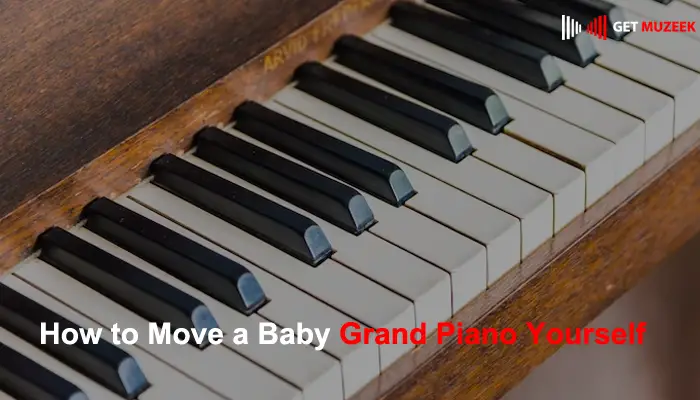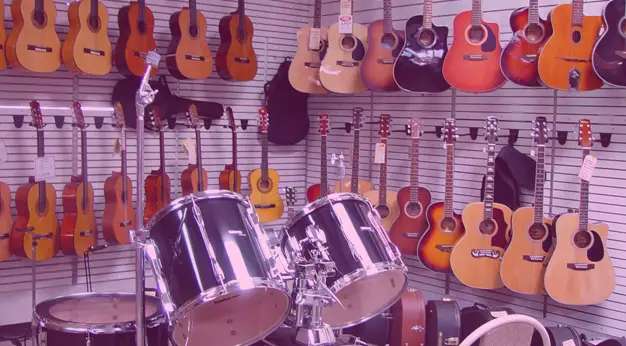
Moving a baby grand piano is no small task. It requires careful planning, preparation, and execution to ensure the safety of both the instrument and the people involved. Hiring professional movers is often the recommended approach, but if you’re feeling adventurous and up for the challenge, this guide will provide you with step-by-step instructions on how to move a baby grand piano yourself.
From gathering the necessary tools to protecting the delicate components, we’ll cover it all. So, let’s dive in and get ready to move that piano!
1. Gathering the Essential Tools
Before you embark on this challenging endeavor, it’s crucial to ensure you have all the necessary tools at your disposal. Here’s a list of items you’ll need:
- Heavy-duty furniture dolly with straps
- Moving blankets
- Bubble wrap or packing paper
- Packing tape
- Screwdrivers (both flathead and Phillips)
- Socket wrench
- Furniture straps or ropes
- Furniture sliders
- Moving pads or cardboard
2. Preparing the Piano
Proper preparation of the baby grand piano is essential to avoid damage during the move. Here’s what you need to do:
- Measure the piano: Determine the dimensions of your piano to plan the route and ensure it fits through doorways and hallways.
- Remove all objects: Clear the area around the piano and remove any decorations, lamps, or fragile items nearby.
- Lock the keys: Close and lock the piano lid securely to prevent it from opening during the move.
- Take photos: Capture detailed images of the piano from various angles. These will serve as a reference in case any issues arise during the move.
3. Disassembling the Piano
To make the piano more manageable and protect its delicate parts, disassembly is often necessary. Follow these steps:
- Remove the music stand: Unscrew and detach the music stand from the piano.
- Detach the pedals: Carefully unscrew and detach the pedals, keeping them in a safe place.
- Remove the piano lid: Lift the piano lid and detach it by unscrewing the hinges.
- Secure the lid and other loose parts: Wrap the lid and any loose parts, such as decorative elements or leg braces, in moving blankets or bubble wrap and secure them with packing tape.
4. Ensuring Proper Protection
Protecting your baby grand piano during the move is crucial to prevent any damage. Here are some key steps to ensure its safety:
- Cover the piano: Use moving blankets or pads to cover the entire piano, securing them tightly with packing tape.
- Wrap the legs: Wrap each leg with moving blankets or bubble wrap and secure them with packing tape.
- Protect the pedals: Place bubble wrap or moving blankets around the pedals and secure them with packing tape.
- Secure the piano to the dolly: Use furniture straps or ropes to secure the piano to the heavy-duty furniture dolly, ensuring it’s tightly fastened.
5. Moving the Piano Safely
When it comes to moving the piano, proper technique and caution are vital. Follow these steps to ensure a safe move:
- Lift with assistance: It’s highly recommended to have at least four people available to lift the piano onto the dolly.
- Position the dolly: Position the dolly near the piano, ensuring it’s stable and secure.
- Lift and tilt: Carefully lift the piano while tilting it back onto the dolly, making sure it remains balanced.
- Secure the piano: Use the straps or ropes to secure the piano tightly to the dolly, preventing any movement during transportation.
6. Navigating Stairs and Tight Spaces
Moving a baby grand piano through stairs or tight spaces requires additional planning and caution. Follow these guidelines:
- Assess the route: Evaluate the path for any obstacles, narrow hallways, or sharp turns that may pose challenges.
- Protect the piano: Use moving blankets or pads to wrap the piano further and provide additional protection against potential impacts.
- Use furniture sliders: If the piano needs to slide across any surfaces, place furniture sliders underneath to reduce friction and make it easier to maneuver.
7. Reassembling the Piano
Once you’ve successfully transported the baby grand piano to its new location, it’s time to reassemble it. Here’s what you need to do:
- Attach the piano lid: Reattach the piano lid by carefully aligning it with the hinges and screwing it back in place.
- Reattach the pedals: Align the pedals with their respective slots and securely screw them back into position.
- Reinstall the music stand: Align the music stand with the designated slots and screw it securely into place.
8. Tuning and Care After the Move
After moving a baby grand piano, it’s essential to take a few additional steps to ensure its proper functioning and care:
- Allow the piano to acclimate: Give the piano some time to adjust to its new environment by allowing it to sit untouched for at least 24 hours before tuning.
- Schedule a professional tuning: Contact a professional piano tuner to adjust the strings and ensure optimal sound quality.
- Maintain proper humidity: Keep the room’s humidity levels stable using a humidifier or dehumidifier to prevent damage to the piano’s wooden components.
Frequently Ask Questions
Can I move a baby grand piano alone?
Moving a baby grand piano alone is strongly discouraged. Due to its size, weight, and delicate construction, it’s best to seek assistance from others to ensure both your safety and the piano’s well-being.
What tools do I need to move a baby grand piano?
To move a baby grand piano, you’ll need a heavy-duty furniture dolly, moving blankets, bubble wrap, packing tape, screwdrivers (both flathead and Phillips), a socket wrench, furniture straps or ropes, furniture sliders, and moving pads or cardboard.
Should I hire professional movers instead?
Hiring professional movers is generally recommended for moving a baby grand piano. They possess the expertise, experience, and specialized equipment necessary to ensure a safe and successful move.
How long does it take to move a baby grand piano?
The time required to move a baby grand piano varies depending on factors such as the distance, the complexity of the route, and the availability of assistance. On average, it can take several hours to complete the entire process.
Can I move a piano without disassembling it?
While it’s possible to move a baby grand piano without disassembling it, it’s generally not recommended. Disassembling the piano makes it lighter, easier to handle, and reduces the risk of damage during transportation.
How do I protect the piano during transportation?
To protect the piano during transportation, use moving blankets or pads to cover the entire instrument, wrap the legs and pedals individually, and secure everything tightly with packing tape. Additionally, ensure the piano is securely fastened to the dolly or moving truck using straps or ropes.
Conclusion
Moving a baby grand piano yourself can be an exciting and rewarding experience. However, it’s important to approach the task with caution, proper planning, and the right tools.
By following the steps outlined in this guide, you can ensure the safety of both yourself and the piano throughout the move. Remember to take your time, seek assistance when needed, and prioritize the protection of this cherished instrument. Happy moving!
Related Posts:
- How to Play G on the Piano
- How to Play Wake Me up Avicii Guitar Chords
- How to Play Hallelujah Chords Guitar: A Comprehensive Guide
- How to Play Eight Days a Week Chords
- How to Play Taylor Swift “You Belong With Me” Chords



